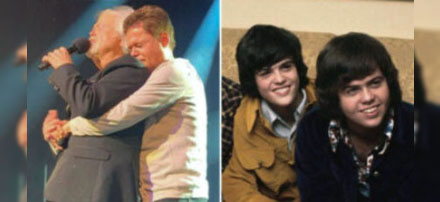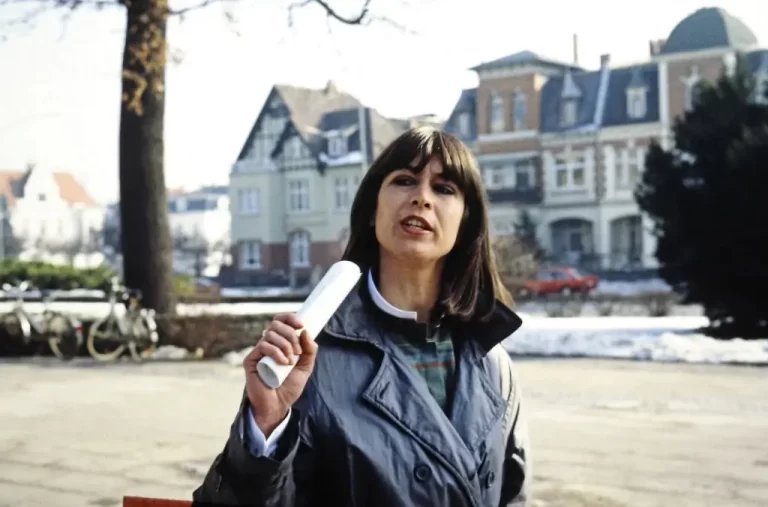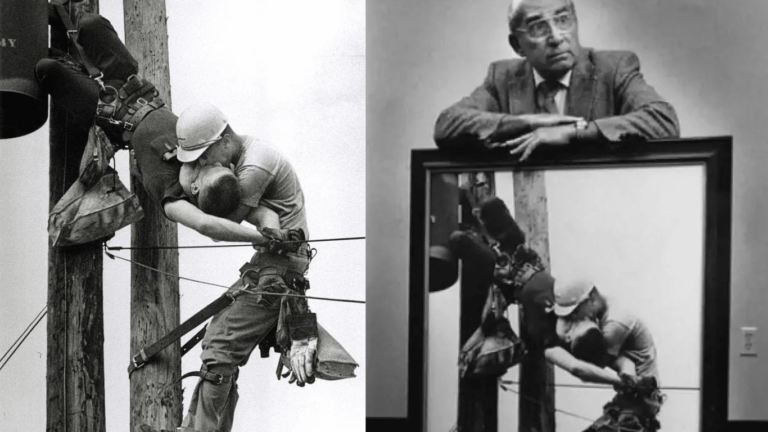Cecilia Payne-Gaposchkin: the woman who found hydrogen in the stars
Sidney Perkowitz explores the discoveries and life of Cecilia Payne-Gaposchkin, from her important astronomical findings to the challenges she faced as a woman in the early 20th century.
Hydrogen, the simplest atom, is a basic building block of the universe. We know that it existed soon after the universe was born and that it still appears as a large part of the interstellar medium in which stars form. It is also the nuclear fuel that keeps stars radiating immense amounts of energy as they evolve over eons to create the chemical elements.
But how did we figure out that hydrogen is a crucial part of the universe? Many people aren’t aware that a young PhD student named Cecilia Payne (later known as Cecilia Payne-Gaposchkin) made this groundbreaking discovery in 1925. Despite the challenges women faced in getting PhDs back then, she earned hers and conducted groundbreaking research for her thesis. Her story not only highlights her scientific achievements but also sheds light on the barriers and sexism that hindered women’s scientific dreams and careers during that time.
Young scientist
Cecilia Payne was born in Wendover, England, in 1900. Her father passed away when she was just four years old, but her mother Emma recognized her daughter’s talent and passion for science. Emma enrolled Cecilia in St Paul’s School for Girls in London, which had excellent facilities for teaching science. At the age of 17, Cecilia flourished in this environment. In her autobiography “The Dyer’s Hand” (later republished as “Cecilia Payne-Gaposchkin: An Autobiography and Other Recollections”), she wrote about sneaking into the science lab for her own private “worship service,” where she admired the chemical elements.
In 1919, Cecilia started her higher education journey at Newnham College, University of Cambridge, with the help of a scholarship. Even though the university didn’t grant degrees to women back then, Cecilia pursued her passion for science. She studied botany, which she adored, along with physics and chemistry. This period was thrilling for scientific exploration as new ideas like quantum mechanics and relativity were emerging.

During her time at Cambridge, famous scientists like Ernest Rutherford and Arthur Eddington were delving into the mysteries of atoms and stars. Payne-Gaposchkin had Rutherford himself as her physics teacher. However, being the only woman in the class, she faced humiliation. University rules made her sit in the front row, where Rutherford would often single her out. He would loudly announce, “Ladies and gentlemen,” making her feel embarrassed as the boys in the class laughed and cheered. Cecilia felt uncomfortable and wished she could disappear. Even now, she prefers sitting at the back in lecture rooms.
Instead of being discouraged by Rutherford’s treatment, Payne-Gaposchkin found encouragement from Arthur Eddington. She attended his lecture about his 1919 expedition to West Africa, where he confirmed Einstein’s theory of general relativity. This impressed her so much that she decided to pursue physics and astronomy instead of botany. When she later met Eddington, she expressed her desire to become an astronomer. His response, “I can see no insuperable objection,” gave her hope despite the challenges she faced as a woman in the field. Eddington involved her in his stellar structures research but warned her that opportunities for female astronomers in England would be limited after Cambridge.
New shores
Luckily, Payne-Gaposchkin found a new opportunity when she met Harlow Shapley, who was the director of the Harvard College Observatory in Cambridge, Massachusetts. He supported her aspirations, and she discovered that he was starting a graduate program in astronomy. With a strong recommendation from Eddington, Shapley offered her a small stipend as a research fellow. In 1923, she traveled to the US to pursue a PhD under Shapley’s guidance.

For years, women played a vital role in research at the Harvard Observatory. In the 1870s, Charles Pickering, the director before Shapley, started hiring women, known as the “Harvard Computers,” to analyze the observatory’s vast data collection. Women were chosen because they were believed to have more patience for detailed work, and they were paid less than men. Some of these women didn’t have a science background, and even those with college degrees were paid very little, around 25 to 50 cents per hour.
The Harvard Computers weren’t working on their own research projects; they were assistants assigned to specific tasks. However, these women made major contributions to early observational astronomy. Among them were Henrietta Swan Leavitt, known for discovering the period-luminosity relationship of Cepheid variables, and Annie Jump Cannon, who gained international recognition for organizing stellar spectra.
Scientists had known since the mid-1800s that each element creates its own special pattern of spectral lines. They noticed that the spectra of stars had both similarities and differences. This hinted that stars could be grouped, but there wasn’t a clear consensus on the best way to categorize them.
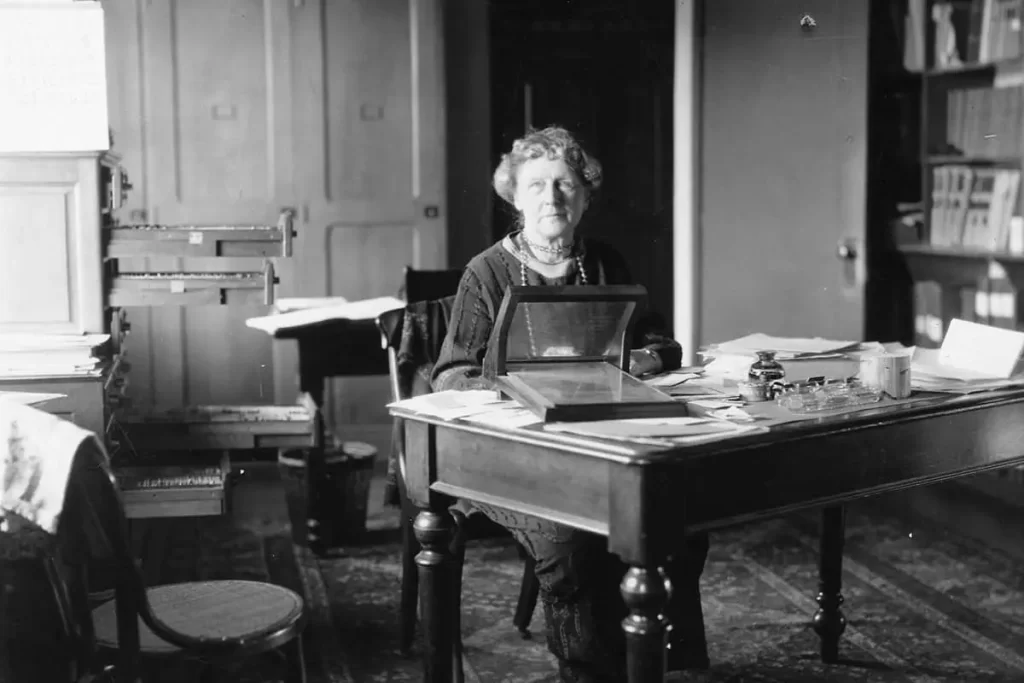
In 1894, Cannon began a big project at the observatory. She looked at the stellar spectra gathered there and organized them in a useful way. This was a huge job that took her many years. The spectra from different stars were recorded on small glass plates, each only about an inch long. Cannon used a magnifying glass to examine the details of hundreds of thousands of spectra. She sorted most of them into six groups named B, A, F, G, K, and M, with a few in group O. This system was based on the strength of the Balmer absorption lines, which describe the spectral line emissions of the hydrogen atom. It also showed the unique spectral characteristics of certain elements, like metals in K stars.
Spectral studies
Cannon didn’t dig into what caused the spectra or pull out detailed information from them. But in her PhD work, Payne-Gaposchkin used her knowledge of physics from Cambridge to analyze this special set of data with the newest theories. The explanation of spectral lines had only been figured out a decade before in 1913 by Niels Bohr’s early quantum theory of the hydrogen atom, which others later added to. These theories were about neutral atoms. Payne-Gaposchkin realized something important: the spectra from excited or ionized atoms, like what might happen in the hot outer part of a star, were different from those of neutral atoms of the same type.
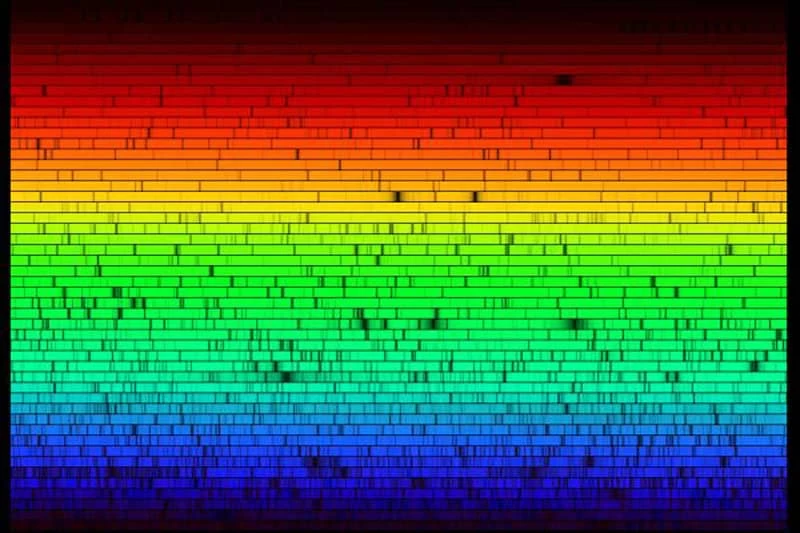
In 1921, the Indian physicist Meghnad Saha figured out how temperature, the quantum states of hot atoms, and their spectral lines are related. He couldn’t completely check his ideas without knowing the quantum energy levels for each element, but these were being measured when Payne-Gaposchkin started her research. She did a huge job combining the new data with Saha’s theory to fully explain Cannon’s stellar spectra, including temperature effects. One big thing that came out of this was connecting stellar temperatures with Cannon’s groups, which we still use today. For example, B stars are hot at 20,000 K while M stars are cooler at just 3000 K. This discovery was a big deal and was part of Payne-Gaposchkin’s impressive 1925 thesis Stellar Atmospheres. It got a good response, but another part of her thesis didn’t.
Compositional conundrums
Payne-Gaposchkin figured out how much of each element was in the stellar spectra. She found that for 15 elements, like lithium to barium, the amounts were alike in different stars, and it matched what’s on Earth. Astronomers back then thought stars were made of the same things as Earth, and her findings supported that idea.
Then there was a big surprise: her study showed that hydrogen was way more common than other elements, about a million times more, and helium was about a thousand times more. This led to the idea that the Sun was mostly made of hydrogen. However, a respected examiner, Henry Russell, who believed the Earth and the Sun had the same stuff, disagreed. He thought it was impossible for hydrogen to be so much more common than other elements.
If Russell didn’t approve her thesis, it wouldn’t be accepted. So, Payne-Gaposchkin made a tough decision. In her final thesis, she didn’t stand by the part about hydrogen and helium, saying it was likely not accurate. But in 1929, Russell published his own findings about the elements in stars, including hydrogen, and acknowledged Payne-Gaposchkin’s work. He found that her results matched his, showing that hydrogen was indeed abundant in stars. While this confirmed Payne-Gaposchkin’s work, Russell didn’t admit he had doubted her findings before.
Russell’s comment on hydrogen might have been a warning to Payne-Gaposchkin about challenging established ideas, which could have harmed her career. It’s likely that only a respected scientist like Russell could have convinced others of this new finding. His later paper helped astronomers accept that stars are mostly made of hydrogen, and he was even given credit for the discovery.
The power of Cecilia Payne-Gaposchkin’s thesis speaks for itself. Her lucid writing style, command of the subject and pioneering science shine through
Despite not receiving full recognition, the strength of Payne-Gaposchkin’s thesis is clear. Her clear writing, deep understanding of the topic, and groundbreaking research stand out. Shapley had her work published as a monograph, and it sold 600 copies, almost like a bestseller for a dissertation. The greatest compliment came nearly 40 years later when renowned astronomer Otto Struve hailed “Stellar Atmospheres” as “the most brilliant PhD thesis ever written in astronomy.”
If Payne-Gaposchkin harbored any resentment toward Russell, she didn’t show it and maintained a friendly relationship with him. In a review of his work for a 1977 symposium honoring him (he passed away in 1957), she praised his 1929 paper as “epoch-making” without mentioning her own research. However, she deeply regretted not standing by her findings. Her daughter Katherine Haramundanis revealed that “throughout her life, she regretted that decision.” In her autobiography, Payne-Gaposchkin admitted, “I was at fault for not sticking to my point. I gave in to Authority when I knew I was right… I mention it here as a lesson for the young. If you’re confident in your facts, you should defend your stance.”
Battling bias and prejudice
After finishing her thesis, Payne-Gaposchkin remained at the observatory with Shapley, but her role was unusual. She wanted to continue her research in astrophysics, but Shapley paid her a small salary as his “technical assistant,” which led him to direct her as he would a Harvard Computer. He assigned her tasks like measuring the brightness of stars, which didn’t excite her much. Shapley also had her teach graduate courses, but without giving her the title of “instructor” or “professor,” and without listing her courses in the catalog. Shapley tried to change this by speaking with the dean and Harvard’s president, Abbot Lawrence Lowell, but they firmly refused. Lowell informed Shapley that Miss Payne would never have a position at the University as long as he was in charge.

Gender bias affected Payne-Gaposchkin throughout her career. Even though she earned the first astronomy PhD at Harvard, technically it wasn’t from Harvard itself. Shapley, her mentor, tried to get the chair of Harvard’s physics department to approve her dissertation, but he refused to accept a woman candidate. Instead, her PhD had to be granted by Radcliffe, the women’s college at Harvard. Later, when Shapley wanted to establish a proper astronomy department at Harvard, he believed Payne-Gaposchkin, his top researcher, was the right person to lead it. However, he knew that Lowell, the university president, wouldn’t allow it, so he hired a male astronomer instead.
After many years of hard work at the observatory, writing books, and publishing lots of research papers, Payne-Gaposchkin still didn’t have a good job or get paid well. But things changed in 1954 when Shapley retired and Donald Menzel took over. He found out she wasn’t paid much and doubled her salary. Then, he did something really important. With Lowell, who didn’t like women, gone (he retired in 1933), Menzel helped Payne-Gaposchkin become a full professor of astronomy. This was a big deal: the New York Times said on June 21, 1956, that she was the first woman to become a full professor at Harvard through regular promotion. And a few months later, she became the head of the astronomy department, the first woman to lead a department at Harvard.
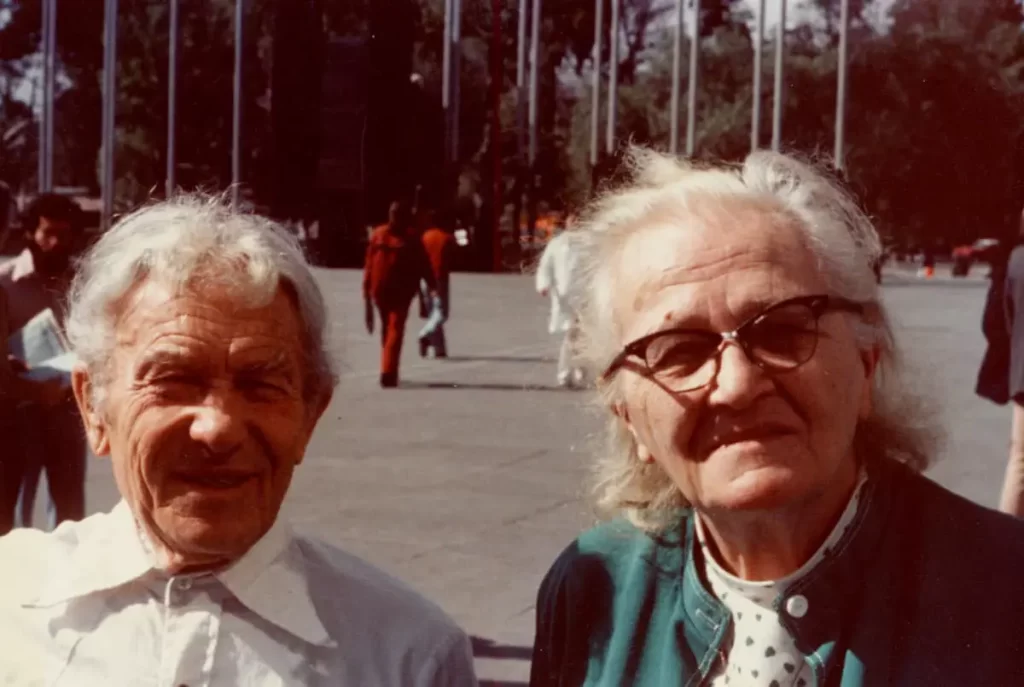
Looking back, Payne-Gaposchkin had a very successful career. She wrote a great dissertation, did lots of research, taught well, and got recognized for being the first woman to do certain things at Harvard, among other honors. Besides her work, she also had time for her personal life. She married the Russian astronomer Sergei Gaposchkin in 1934, and they raised three children together while she kept doing astronomy research.
Exceptional drive
In a way, you could say she “had it all” by balancing her science work with her family and kids. But getting to that point was really tough because of unfair treatment toward women. She became a full professor when she was 56, much later than a man with the same accomplishments would have. And she had to deal with being overlooked for promotions, which must have been really hard on her mentally. It took someone with incredible determination, persistence, and scientific talent to keep going until she finally got the recognition she deserved.
In the end, Cecilia Payne-Gaposchkin passed away in 1979, leaving behind a legacy of groundbreaking scientific work. However, she faced many challenges in her professional life. Despite being given important opportunities by Shapley and proving herself as a skilled scientist, she was often treated more like an employee than a respected researcher or student. Although she helped advance the role of women in astronomy beyond that of the “Harvard Computers,” she still faced barriers that prevented her from fully realizing her potential as a scientist. Her remarkable contributions were sometimes overlooked, and her legacy faded into obscurity, much like many other women who made significant contributions to science. Only recently have people begun to recognize the important role she played in paving the way for women in science. She should be remembered as a crucial figure who bridged the gap between the past and present opportunities for women in scientific fields.


